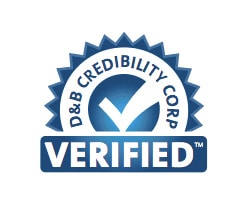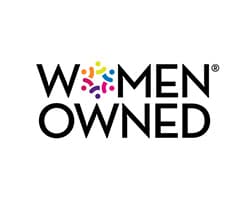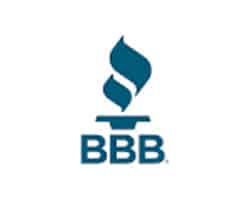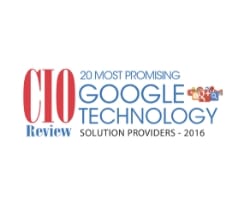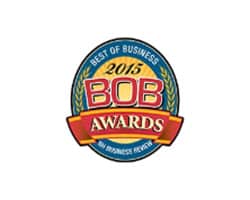In this episode of B2B Brand180, Linda interviews Dan Balcauski, Founder and Chief Pricing Officer at Product Tranquility. They discuss strategies for effective pricing in the B2B SaaS space. Dan shares insights on the importance of understanding customer value, the nuances of price metrics versus value metrics, and tactics for implementing price increases. The episode provides valuable advice for SaaS companies seeking to optimize their product pricing strategies.
01:55 Understanding SaaS Pricing Challenges
04:47 The Services Model for Pricing
08:21 Strategies for Entering Competitive Markets
19:22 Executing a Price Increase
23:30 Rapid Fire Questions
More info on Dan Balcauski:
https://www.linkedin.com/in/balcauski/
https://www.producttranquility.com/
Linda’s LinkedIn: https://www.linkedin.com/in/lindafanaras/
Millennium Agency: Brand Strategy | Marketing | Web Design: https://mill.agency
YouTube Channel: https://www.youtube.com/@mill.agency/
Linda’s Books:
Claim Your White Space
https://www.amazon.com/CLAIM-YOUR-WHITE-SPACE-CRITICAL-ebook/dp/B0CLK8VLYV
Passion + Profits: Fueling Business And Brand Success
https://www.amazon.com/Passion-Profits-Fueling-Business-Success-ebook/dp/B0CLLDDSNX/
Linda Fanaras:
Welcome to the B2B Brand180 podcast, a place where we focus on transformative strategies and innovative approaches in B2B branding. Today you’ll learn how to make a 180-degree shift in your marketing efforts or actually complete reversals in your brand strategies. And I’m Linda Fanaras, And I am excited to bring in Dan Balcauski. And he is the Founder and Chief Pricing Officer at Product Tranquility. They are out of Austin, Texas, where we all love Austin, Texas. And he focuses on really helping those high volume B2B SaaS CEOs determine pricing and packaging and anything that they need to roll out new products. So Dan, it’s great to have you here. I’d like for you to take a couple of minutes and introduce yourself to our audience and maybe share some insight.
Dan Balcauski:
Yeah. Well, very excited to be here. Thank you for hosting me, Linda. Well, you did a wonderful job in the intro. So as you mentioned, I run a consulting firm called product tranquility, focus on helping high volume B2B SaaS CEOs define pricing and packaging for new, as well as optimizing for existing products. So, I’ve been doing that for over. Six years now, which is a little bit amazing to think about. But yeah, I’ve been in my, I’ve been in the tech space, my entire career, sort of more on the building side and realized that the computers did not care how angry I got at it still would not run the code that I tried to have it run. So quickly realized that my interests and talents are better suited more focusing on how the. Products that we were building actually created value for customers and how that value turned to dollars and cents for the business. And then there’s kind of a long winding path from there to where I am today. But yeah, I have the honor and privilege today of helping a lot of SaaS CEOs and the leadership teams to make sure their products are profitable and successful and match the value that they provide their customers.
Linda Fanaras:
Yeah, that’s great. And SaaS is, I mean, there are lots of SaaS products out there. I think pricing can be a little challenging and however you bundle things up or packaging can also be challenging. And often people just don’t get it right or they’re not sure where to start. Maybe they’ll take a look at some competitors and make a best guess and go from there. But I’d love to hear from you. what do people really get wrong about pricing?
Dan Balcauski:
Yeah, well, there’s a long list, but I would say that. Most fundamental level, you know, when it comes to SaaS pricing, your most executives think that what you charge determines your success. In fact, who and how you charge determines your success. So said another way, if I was advising a team, I would say, spend most of your time on what the price tag goes on and little time. On what number goes on the price tag. So when I say I do pricing, a lot of folks immediately, you know, like, Oh, should our prices end in fives or nines or you know, those are, those are fun, interesting conversations, but they tend to be the least impactful. And you pointed it out sort of in the, in the premise of your question, which is a lot of the conversation is. You know, do we even have the right things bundled together? Because you know, we don’t, you know, really comes from an understanding of, of your customers and, and what they need and, and working sort of backwards from the customer. A lot of folks really start, especially a lot of technical teams, you know, you get companies that are founded by a couple of engineers that really enamored with the technology and start with the features and capabilities. And just like, Oh, well, well, this is a feature that it. It was really hard to build and so we should charge people for it. But while your customers don’t really care that it was hard for you to build, right, what job does it get done for them? But then also, right, as you go into the marketplace you don’t want to force, you know, it’s not only making sure that those. Features are land in the right spot, but they are able then to communicate that in a language that the customer understands. So, you know, you’re not using sort of feature language, but benefit and value language as well, because to be able to communicate to people that, Hey, like this is, you know, this package is for you. This is the benefits it gets without, you know, listing, you know, the 200 separate features that might be in your software product, which could be overwhelming as well.
Linda Fanaras:
Right. And I think, you know, interesting to your point there, because since there are a lot of SaaS products out there and you may have a couple of techies that are building something out that’s really cool and innovative and hasn’t really hit the market yet. But on the other hand is who are you selling to, which I think is what you were getting at. Okay. So who are you selling to? And then what are they interested in buying? And then what are they interested in paying? How do you go about figuring out, you know, I’m assuming you’re looking at the market, you’re looking at competitors, you’re looking at the features, you’re looking at the benefits, you’re looking at all the other things that may impact their pricing. But what is What is your, your tactic as far as how would you go into somebody to help them with this process?
Dan Balcauski:
Yeah, well, in lieu of teaching an eight week course to answer your question, I’ll, I’ll, I’ll kind of start at the high level, which is, you know, I’ve, I saw so many Challenges with companies trying to tackle this problem. And I noticed his patterns, the companies tend to face four big problems over and over again. They don’t really know who their customers are. They don’t understand how their product helps customers. You know, they can’t explain why their product is special differentiated. And they forget that pricing is more than just picking a number. So to help those problems, I created a model that I use all the time. I call it the services model. It stands for svcs or the four letters acronym segments value competition and strategy So just I kind of break that down the first three elements so segments. So who are your customers? You know, what do they you know, who are they and what do they want? Right. Because we often think, you know, get stuck on that element of just firmographics or demographics. Oh, this is a, this is an enterprise customer. It’s a small business customer, you know, it’s a college educated consumer. Right. But that doesn’t really tell me much about what they need and why they might make a different purchase decision. You know, next is value. Like, you know, how does your product help customers? Why is that important to them? C is your competition. Like what other choices do customers have? And then these First three elements considered sort of inputs to the pricing process because your pricing power ultimately comes from understanding the differentiated value that you create for a particular customer segment beyond the competitive alternatives that are built. So those three elements then filter down to the final piece, which is strategy. So like, how will you sell your product to the right customers in a way that effectively communicates why you’re different and why you could help them? Does it in a efficient way that you’re, then your team doesn’t have to go through a full on explanation of the history of all the features that you possibly could do, right? But that helps lubricate your go to market engine versus becoming sand and that go to market engine. Right. And strategy I use in the Michael Porter sense of the word, because strategy is ultimately about making trade offs and this is where teams get real, get real nervous because you can’t make everyone happy and ultimately pricing is one of these areas where. This is where the rubber hits the, hits the road. Like you can, you can have the sort of corporate strategy session where you, where they come out with a list of goals and everyone serves like, well, all of these things are in diametric opposition to each other, but I guess I’ll just go back and do my work. But you can’t, you can’t come out of a pricing exercise that way. It’s like, we have to figure out who are our customers and who are we actually trying to serve and who are we not, who are we not interested in serving. And that really forces a trade off because you’re often left with a lot of very difficult decisions that pertain to things that, Hey, this group of customers receives or perceives value in an entirely different way. All right. And so we charge per user in this context, these customers will be really happy, but it will really alienate these ones. If we charge per gigabyte of data stored. Vice versa, right? And so we’ve got to sort of, that’s where this rubber hits the road of these, of these trade offs. And so we’ve got to really understand which customers we focus on, you know, how will you show them your products, your best choice, and how will you package your price, your product to make it easy for them to buy? So pricing is just not about picking a number. It’s really about understanding those customers and smart choices, how to align what you sell with the value that you ultimately provide.
Linda Fanaras:
Now, Dan, I’m sure you’re challenged from time to time when you are working with SaaS customers, those who actually have similar or competitive products in the market. So you’re looking at pricing strategy and to your point, you’re looking at a lot of other things, ICP, their, you know, potential customer profile and so on and so forth. Mm hmm. When somebody is releasing a new product that is in a highly competitive market where there’s generally a pricing structure that might be set out there, how do you come into the market? Do you come in less? Do you come in the same? Do you come in more? Do you try to push on your differentiators? Are there certain tactics and strategies that you use to help, you know, leverage a new launch that may be in a competitive market?
Dan Balcauski:
So look, ultimately it comes down to what is your goal, right? And you’d be surprised. This is another area where companies go a long way without ever officially sort of writing down what they’re, what they’re trying to achieve. Right. And so, you know, we really want to understand, okay, is our goal to go grow top line revenue? Are we trying to increase profit? Are we really concerned about more, you know, unit economics type increases like customer lifetime value or, you know, reducing our customer acquisition costs? What are, what are we going after? Because the. Answer to your question is like, well, if, if your goal is to grab market share, I’m going to give you a very different answer to that. That if your goal is to maximize revenue or maximize profitability. So, you know, one of the very first things that. You know, I often need to do is help everyone come to the table about what your goal is. And so it’s kind of funny cause you’ll often get, you know, a bit of an eye roll from members of the executive team, right? Cause you’ll ask a question, right? You know, that’s the benefit of a consultant, right? We get to ask the stupid questions cause we don’t know. Right. So you’d be like, well, what is your goal with your pricing change? I’ll be talking to the CMO. Oh, I rule. Well, of course it’s to increase, you know, how many leads we can get, right? Market share, right. And you go to CFO, what’s, what’s the goal? Oh, of course it’s to increase gross margin,
Linda Fanaras:
right? Right. And so
Dan Balcauski:
that, so that I get to walk into the room with all of them and be like, okay, all of you are a hundred percent convinced that you know what the goals are and you’re right, except none of you are sharing the same goal. So let’s get that aligned first. And that might seem like a business one on one, but surprisingly common and maybe not as a surprise to you. No. It does. for very long.
Linda Fanaras:
Yeah, that was, that was the first thing I thought of. I’m like, wow, you’re going to get all these people in a room and actually get an agreement on the first shot. It seems like that would take some time. Yeah. Yeah. Totally agree with that. Go ahead.
Dan Balcauski:
But but you know, there’s, you know, there’s no right, you know, one, one answer to rule them all in, in those cases. What I will point out are a couple of patterns that you tend to see in, especially in the tech space where. You will tend to see a a lot of companies try to go for especially if they’re like venture capital, funded you saw this a lot with like Uber, for example, Uber and Lyft, we all benefited for, I don’t know, eight years with venture capital subsidized rides, right? Because they were just trying to go grab market share. They were just funneling money into it, you know, either just paying out a cost or, or even below that. In the, why would they do that is because there was a fundamental belief that those, that was a network effects business. And that once you were the dominant player, you had an unassailable position. And at that point, then you had market. Power to raise pricing longterm. So what does that mean? It means the answer also depends upon what is the relevant timeframe, because you know, if I’m playing a, you know, a 10 year, I need to win this market, you know, at all costs game and there’s, and we’re in a market. Dynamics where there’s going to be one winner. There’s going to be just one meta, but there’s going to be just one Google. Then I may have very different incentives that affect my pricing strategy today than otherwise in B2B. It’s much less clear that those are that those winner take all dynamics. Are actually as relevant. And so I see a lot of folks who use hope as a strategy of, look, we’ll go one topic you’ll hear a lot in this, in the software world is land and expand.
Linda Fanaras:
We’ll go, we’ll
Dan Balcauski:
go land all these customers and then we’ll upsell them. Well,
Linda Fanaras:
yeah.
Dan Balcauski:
But that tends to be more hope than strategy. It’s not usually aligned. It’s not usually outlined very clearly what that path is. They haven’t really thought about what’s the customer value journey you’re going to take them on that merits them actually paying you for that next step in that next step. Or, or that’s, Hey, that’s a future roadmap. We’ll build those capabilities after we go get all this marketplace. So, there’s usually not a great approach in B2B markets. You tend to see a very different dynamics. And so that’s one thing I would always caution people be aware of the lessons you learn as a B2B leader. That you say, Oh, well, this worked for Amazon. This worked for Uber. This worked for Google in this other consumer space. And you try to bring it over to a B2B space. It tends to be very different because look B2B buyers don’t like “winner take all” markets. They like being able to play suppliers off each other. So, so B2B markets are like sort of self-healing a lot in that way, where there’ll be like, Oh, Hey, we don’t want, I’m not going to give this business. I’m, I’m going to pay Microsoft and Apple and whoever else this money for all my, you know, whatever services because, you know, I don’t have any of them to run away with the lead.
Linda Fanaras:
Yeah. No, that’s good. That’s great feedback. And I appreciate that. So I do have an interesting question because I think pricing can be a little more complicated than often companies or marketers or CEOs can think about. Can you explain the difference between a price metric versus a value metric? How that might play into, you know, what you do.
Dan Balcauski:
Yeah. So, when I, when I think about, I’ll take a step back because we were talking about pricing and packaging writ large and so packaging, if you’ve only been in a CPG space, you might think like, Oh, what does he talk about? Like the cardboard cartons with the, with the bright colors on it. Like, no, within the world of SaaS, I break the packaging aspect into four different elements. So just real quick, those would be things like your, your price metric. So that’s a unit of value. I charge a customer for is that seats, API data your price model. So this defines how and when payments flow through a system. So this is a perpetual license. I pay you once and then I can go use the software forever. So subscription, is it more of a pay as you go type model, like a utility building model, like you might have for your electric company bill, you know, they charge. Meter how much you use and then get on your bill at the end of the month. There’s your bundles or offer configurations So these would be things we often see like a good better best type of you know Hey, we’ve we’ve grouped sets of capabilities together and in predefined ways to help you make your purchase selection better And then finally you have like your price fences. So, these are often distinctions of how I Two different customers can pay different prices for the same product. We have this all the time in in consumer markets, right? If I get on the bus, I’m going to pay one price, but a student or a senior citizen may pay an entirely separate price, right? We have the similar effects in, in the, in the B2B world. So you asked specifically about. Price metrics and value metrics. And I’m glad you asked about this because one thing that can be frustrating for even pricing folks, let alone anyone trying to look in from the outside and understand the spaces that the, the pricing world has not aligned on different, I try to be consistent. So price metric ultimately. You know, it could be things like the numbers of gigabytes of data stored or transferred or number of API calls or the number of seats that you need to buy, right? But all of those things are very product facing, right? There are things that we can count as the vendor that scale with usage, right? If a company is coming in and buying 10 seats.
Linda Fanaras:
You
Dan Balcauski:
know, ultimately they should pay a lower price and company by it coming in who needs to buy a thousand seats, right? And so this is a way for my price to scale what’s missing in that is Does that pricing metric align with the value of? That your customers are receiving from the product you offer. So the idea of a value metric is the value metric is entirely customer focused So it’s the metric that a customer is going to use To judge the effectiveness of the product in their environment. So are we helping them? Save time, save money, increase their revenue, decrease risk you know, and those are sort of what we think of as like functional functional value metrics. There might also be, you know, more emotional type metrics, right? A Timex and a Rolex have the same functional requirements, but one has a very different emotional effect than, than another. But in the B2B space, we really want to understand what. like how our customers are thinking about judging the value of our product and then picking a price metric that correlates with that value. Because although we may say, Hey, Linda I know we were talking about some marketing. Technology platform that your marketing team wants to buy. And we’re going to make all of your campaigns more efficient. And, you know, it’s going to ultimately drive a ton of revenue for your business, right? We’ve, we’ve showed you the ROI spreadsheet, right. Of, of how much money we’re going to make for you. We may not be able to, for a whole bunch of reasons. Just say, well, how much revenue are you making now? Right. And then, then the year we’ll check in and ask you how much revenue. And then we’ll just, we’ll just take a percentage of that revenue that we, you know, cause you’re going to turn around and you’re gonna say, well, you are responsible for all of that. And we had to do a bunch of work. It could be a whole bunch of reasons. Right. But that doesn’t, but we, so instead we want to look at, okay, in general, Linda’s buying this marketing technology platform because we’re helping her increase her revenue for her business. What like, what is the, Components that we can track that correlate to ultimately that value such that, you know, because it might not be seats and often in for marketing technology, it’s not right. It’s not like, my marketing campaigns, the more successful they are, I use my marketing head count, right? It’s usually something else. And you’ll find most marketing technology businesses. There’s some, it’s more like if you like a MailChimp, it’s like the size of your contact database or like how many accounts you have, right? That’s more aligned with, with how value scales in that space versus if you’re in the CRM or sales space, you’ve got, you know, per seat model tends to dominate because you’ve got quota carrying reps and every rep you have means they’re holding the bag for that much more quota. And so it does scale nicely with revenue. So you, you see these patterns start to emerge that, that although both have the same value metric of helping you increase revenue, you might choose different pricing metrics.
Linda Fanaras:
And I think that’s what you see a lot of today where you didn’t see as much of it before, but if you’re buying a SaaS product now you might be buying credits or so many API calls or so many, whatever. It could be anything. It could be photo images, could be seats, blah, blah, blah. So the list goes on. So I totally understand that. But I did want to ask you one final question before we get to our rapid fire question is. How should sort of a CMO CEO execute an actual price increase? Are there a couple of different tactics that you can share with me today or share with our audience?
Dan Balcauski:
So like anything else, start with a goal. What is it you’re trying to actually achieve and get folks aligned on that? Because you know, it’s like we want to increase price is not a goal in and of itself. it’s a, means to an end. And so what you want to be able to do is say, okay, we, we want to, you know, use this as a lever to increase overall retention. If we do that, we expect, you should. Go through some, a bit of modeling, right? And be like, okay, we, we would expect there’s going to be a cohort of customers that are totally fine with it. We’re never going to hear a peep from, there’s going to be a cohort of customers who are going to complain, but they’ll continue with, there’s going to be a cohort of customers that tells to go pound sand and they’re going to go find another vendor. Right. And so now I’ve got, okay, my goal, I’ve got some idea of what might happen. I’ve done some customer segmentation based upon that, right? I have some idea of, Hey, there may be some different levels of risk embedded here and this is another area where something like B2C versus B2B becomes very important because the. Think about Netflix raising prices, right? If they lose any given customer, that one customer is not any more important than any other customer. However, if you’re in a B2B scenario, you might 20 percent of your accounts might be 80 percent of your revenue. True. So I might want to cordon that off and be like, okay, let’s look at all the, the long tail, the 80%. And let’s go experiment on our messaging and communication strategy on that. Before we get to JPMorgan and Disney and Sony and, and, and have them tell us to go pound sand. Cause that’s going to ruin our year. Not just right. If they leave. Yeah. Also not a bad idea to, you know, have conversations, right? Have your sales team or sales or customer success, whoever might be handling it, arm them with. Help them bro play, right? A lot of this is enablement on the front end, but you can, you can do sort of iterative rollouts, right? Nothing says, Hey, I’ve got to you know, and, and specifically right now I’m talking about changing customers changing pricing on existing customers. Raging pricing on new customers. I don’t know about you. I’m a pricing expert. And I, I like, if I go to a website today, I was like, I just assumed that’s what their price has been. And I’m not like going back and doing a bunch of historical research to figure out if they changed the price in the last six months so changing price on a new customers, just like, just change the price, like, and then but it’s a little bit more nuanced than that, but you know, the, the tricky part is on the existing customers. Build out what your communication strategy is. Using scientific method, like much like you would for any, new marketing campaign and be like, Hey, we, we expect to see this kind of uplift. We expect to see this many people tell us to go pound sand if it’s underneath 5%, our model still works. So I’m going to go send a sample of it. thousand emails, right? Oh, we actually didn’t hear anything from a thousand. All right. Well, like let’s throw out the next thousand and then, Oh wait, hold on. We threw our first thousand. We hear from 10%. Ooh. Okay. What was it? What did we not understand? What was, what can we tweak in our messaging? Et cetera. All right. And so, you know, there, there are those ways to, to de risk any of those, and I, I tend to find that, look, uh, pricing tends to be very emotional as much for the people inside the vendor, probably more so than it is for the customers. Right. There’s a lot of, there’s a lot of worry and projection done from inside the building to customers and most customers kind of shrug and be like, yeah, yeah, okay. Obviously there are, there are the exceptions those tend to end up on the front page of the New York Times. But there’s, we could, we could talk, we’ll unravel some of those in a, in a deeper dive. We had more time, but in general, there’s not, there’s not you’re, you’re probably not going to make headlines with your, with your 10 percent price increase.
Linda Fanaras:
So what I’d love to do now, Dan is I’d like to ask a few rapid fire questions. So what does that mean to you? So. You would be responsible for answering the questions with like maybe two to three sentences. I’d love to try to get it through as many as we possibly can. And it goes pretty quick, so you may have to speak fast, but I would love to get started on that. Are you, are you good with that?
Dan Balcauski:
I’m game. Let’s go. All
Linda Fanaras:
right, let’s go. So who should be responsible for pricing decisions?
Dan Balcauski:
I would give the ownership to product marketing.
Linda Fanaras:
Awesome. Okay. Is freemium a good idea?
Dan Balcauski:
No.
Linda Fanaras:
Okay. And what are the advantages of free trials?
Dan Balcauski:
So free trials. Are I recommend almost always the better answer in b2b over freemium because they allow Your prospects perceived value of your product to increase but then also give them a Deadline to make a decision to drive action Which freemium doesn’t have so definitely in favor of free trials not in favor of freemium in general
Linda Fanaras:
good to know Okay, awesome. So should a company actually show pricing on its website?
Dan Balcauski:
It depends. Okay. If you’re the only company in your space who doesn’t have public pricing you’re going to have a bad time. If you need, or if public pricing and packaging can help you filter out non qualified prospects because your sales team’s time is very expensive and you don’t want to have them quote data on every call that they could just. Have on the web, especially if that conversation tends to be like, Oh, well, if I knew that much, I wouldn’t have had this conversation. So it could be a good filtering mechanism. Understanding what your competition is doing. And then also goes to like, what kind of market are you in and what is the current complexity of your pricing and packaging? Because I’ve definitely worked with clients where it would not help to put their 50 page PDF price list at, you know, 10 point font on the website have it public. No one would understand what they were even looking at. In that case, if you have that situation, just call me and we can help. We’ll
Linda Fanaras:
help. You’ll help. And my last question is, is how should companies deal with inflation? Should they actually raise their prices?
Dan Balcauski:
Well, I’m hoping we’re going to see the end of this inflationary environment. You’ve seen a lot of companies already do so. In B2B SaaS, it actually has not been a predominant driver because the cost of goods sold and the gross margins are nowhere near what they are in a more. CPG or, or other industries. So, you know, you’ve seen a lot of that already pushed through the market in, in B2B SaaS you know, it’s, it’s, it hasn’t really been a factor, so I have a longer, I have a longer answer,
Linda Fanaras:
but
Dan Balcauski:
this is the rapid fire question, this is a very difficult rapid fire question. It
Linda Fanaras:
is. It is. Some of these are really tricky. So anyway, Dan, so I would, so we’re going to wrap it up. So I appreciate all of the insight that you shared on SaaS. pricing and packaging and who’s making those decisions and how. So I would love for you to tell our audience how they can get in touch with you. You know, where you come in to help and any other information you’d like to share.
Dan Balcauski:
Yeah. Well, I appreciate the opportunity. Thank you for your, you know, to your listeners for their time and attention. I’m happy to connect with folks on LinkedIn and Dan Balcauski. I also have a podcast called SaaS Scaling Secrets where I interview CEOs of scale up B2B SaaS companies. So if you find that wherever podcasts are, are available and then look happy if folks have, you know, specific pricing packaging questions reach out, you know, happy to have a conversation and see then if it, you know, if you know, if I can be helpful.
Linda Fanaras:
Great. Thank you so much, Dan. So I just want to take a moment and thank our audience for listening in today. Again, this is Linda Fanaras, the host of the B2B Brand180 podcast. Thanks for listening in to Dan and hearing about how to really price out SaaS products in the most effective way. And if you need any support in that area, please reach out to Dan. Thank you again for listening.

















